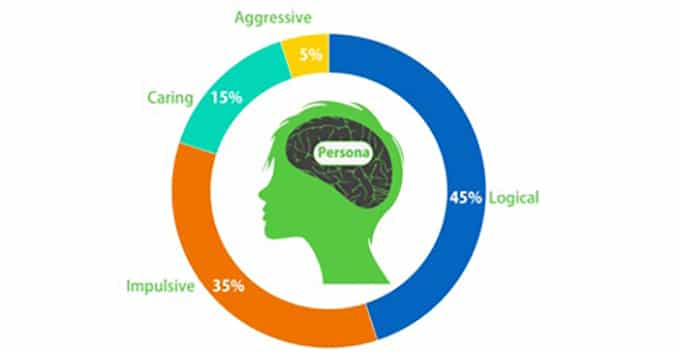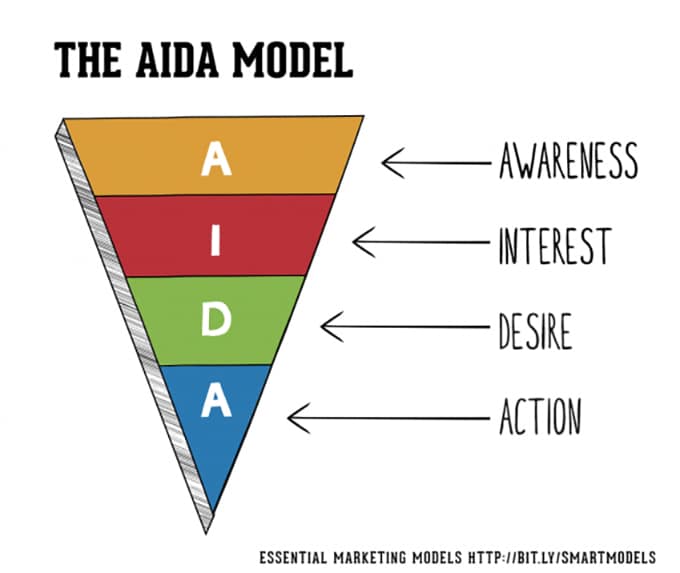Everyone wants to increase their conversion rates and revenue. But to succeed in increasingly competitive times, there are many factors you should consider. Conversion optimization is a discipline that encompasses usability, copywriting, statistics, testing, and research. CRO succeeds when the target market’s needs, wants, and desires are accounted for through design and copy.
The copy is essential to getting your point across and persuading the online visitor. Your copywriting skills become extremely important to be a successful CRO. According to Nick Kolenda;
“Writing copy is tough. Writing persuasive copy is even tougher.”
From the days before the web, copies that addressed the target customer sold better. Of course, the web applied similar, although not entirely the same, copywriting tactics to persuade visitors. However, with the rise of mobile and online marketing enhancement, the rules have changed once again.
Copywriting about copy that sells your product or service, thus convincing your customers to take action. It’s part art and part science.

However, one must understand the medium in which they are presenting the copy and the visitor they are persuading to take action. Online copywriting just ten years ago is not the same today. Much has changed since then and requires a fresh new perspective to enhance your skills and better persuade visitors. According to Sheena White;
“The fact is, if your online copywriting is poor, it doesn’t matter how good the rest of your marketing is – you’ll get no traffic or sales without a great copy.”
We work with many e-commerce companies, and sadly, copywriting is often not a priority, especially on product descriptions. Too often, these product descriptions are generic and taken directly from the manufacturer. The reality is that there is a pivotal point in the visitor’s experience on the website, and the closer they get to conversion, the more critical it is to up your persuasive tactics.
Of course, greater persuasion is necessary when the stakes are higher. If the product or service you offer is a large investment of time and resources, is expensive, and has great value, then copywriting becomes even more critical. Cognitive progression: anticipating the visitor’s actions, needs, and wants because of the value, investment, and price of your product or service. But we will delve into this later in this e-book.

This guide is not for just e-commerce; however, it is for anyone who has anything they would like to persuade online traffic to do: take action, sign up, subscribe, purchase, donate, etc. Much like many marketing skills, copywriting is a learned trait. There are, however, some very talented people that have an eye and knack for writing. But it is indeed something you can build upon to improve your abilities. And this is where this e-book comes in handy.
Before Invesp, I worked on many conversion optimization projects, such as SEO writing and copywriting. At one point, a client hired me to rewrite their existing web copy on standardization. They wanted simple language and a friendlier tone to appeal to the variety of visitors arriving at their site. “Standardization?” I thought. “How hard can that be?” I opened the ‘About’ page and started reading.
“Standardization is the development and application of standards – publications that establish accepted practices, technical requirements, and terminologies for products, services, and systems.”
I shook my head and gulped slowly. I’d zoned out after the first few words. After reading the page, I knew nothing about standards. I recognized that rewriting this to be more engaging while maintaining the topic’s integrity would be a challenge.

Words matter. Ensuring your value is evident through the design and copy on your site is vital. You have a few seconds to connect with site visitors. Every failed connection and lack of engagement is a lost potential customer. Unfortunately, chances are, they will never come back.
Persuasive copywriting engages visitors and keeps them interested, yearning for more.
What is persuasive copywriting?
Copywriting is essentially writing content to sell or promote a product or service. It is the unique ability to deliver work that gets people to take some form of action.
“Your website is an opportunity to establish your brand in the market. When people arrive to your site, they want to know what you do and what you stand for.”
Copywriting is a science and, as mentioned before, can be learned. This e-book contains lots of information and tips. However, the purpose of all the elements we discuss is for the copy to be read. If you have great copy that nobody reads, then you have a problem. The first consideration is the hook, but that hook needs to be engaging enough to keep the visitor reading until, bam, your pitch.
The Copywriting Headspace

When it comes to copywriting, asking yourself a few questions will help you get into the copywriting headspace and critically question the copy throughout your site:
- Does the copy grab your visitors’ attention? A few years ago, much of the literature about copying discussed the 8-10 second rule, which means grabbing a visitor’s attention with the copy within 8 – 10 seconds. However, at this time, you have 2 – 5 seconds max to grab a visitor’s attention. Ask yourself: can visitors perceive the relevance of your page copy to solving their problem and meeting their needs in that short timeframe?
- Does the page copy stimulate their interest and reinforce that they’re in the right place? Does it suggest that your solution is among the most relevant and useful?
- Does the page copy “inspire the desire to click deeper toward a purchase? Does it explicitly engage the imagination of your visitors and make them feel they will get value from your solution?”
“Is it obvious and easy for your visitors to take that action? Do you ask your visitors to take action? Do you give them relevant information at the point of action so they feel more confident in taking that action?”
After they’ve clicked, does the next page copy satisfy your visitors by providing exactly what they want and how they want it?
Copywriting vs. Content writing

Copywriting sells, while content informs. The purpose of the two lies in the reason for writing each of them. One is created for promotion or advertising, while the other is to entertain, inform, and entice the reader. Both are useful for your online marketing strategy, but to succeed online, one must first understand the ins and outs of each to better create a plan around them.
Content writing
When SEO was still a tamable creature, content writing was critical for getting more eyeballs on your website. Making sure to hit certain keywords and writing style was heavily influenced by the purpose of better ranking. Search engines have evolved since then and have penalized many companies that wrote content with the “old rules.”

New rule: Don’t put all your eggs in the SEO basket because rules continually change. One thing holds: If you write for your audience, engage them, and build a tribe around your work, they will keep coming. Not only will they keep coming; but they will be raving and sharing your work, thus, not only being loyal to your content but becoming ambassadors that push your content.
It’s essential to become the authority and resource for whatever you write. Content writing can include anything from blogs to articles to even press releases. The most important two aspects, however, are that you engage and enrich your audience.
Content is the tool to market your business more successfully, whatever business that may be. But if you want to succeed with your content, remember these essential tips:
1. Audience
Who are you targeting? Know your readers to write with them in mind
2. Value
Whatever content you put out there, make sure it is worth the reader’s time: i.e., they will learn something from reading what you have to say.
3. Clarity
Don’t make vague, broad statements that nobody can understand. Sometimes too much technical jargon can take away from experience, so make it real. Of course, if your readers yearn for that technical jargon, definitely include it.
“To keep your target audience interested, you must speak their language. Instead of using unfamiliar terms, stick to words your audience knows.”
4. Research
Don’t assume by making a statement, people will take your word for it. Show them you took the time to look into it and give them evidence of your findings. Research helps your work become more informative.
5. Authenticity and genuineness
Nothing makes a reader trust you more than the genuineness of your content.
6. Remember Your Brand
Connect readers to your brand by creating clear statements and making them feel they can relate. If your content doesn’t relate to your business, you have a problem. Relevancy is what will help you build loyalty to your brand.
7. Keywords
Remember, no more keyword stuffing! But don’t forget to mention the topic, so follow a balanced approach.
8. Word count
The reality is that longer content does better. Google has released that anything below 500 words is considered thin content (source). Neil Patel has done some research on this matter and found that 2000 words or more articles consistently outperform shorter-length articles. Now you don’t want to write aimlessly! If you don’t have content that is enriching and worth sharing, it can be detrimental rather than beneficial.
9. Engaging
If your work isn’t compelling and engaging, then you aren’t going to get many people sharing and raving about your content. However, to get people to share your things, you also need to be an active member of the social community online. If you want people to share your articles, you must do the same for them, and when you form a following, you can become choosier. Don’t go on social media only to promote your stuff – that gets very old very fast, and nobody will push your content.
10. Frequency
If you’re wondering why your once-a-month posts aren’t gaining much traction, it simply comes down to frequency. It would help if you kept writing because it helps your rankings, plus it helps keep the buzz going on your brand.
Copywriting for the web vs. Traditional print
Print copywriting still exists. It’s becoming less common as the years go by. However, there are many similarities between writing print copy and web copy. What’s important to note as well is that just as web copy has evolved over the years, the print copy has adjusted as well.
But let’s delve into some of the similarities and differences between copywriting for the web and traditional print:
- Too many times you go to the site, and the copy isn’t telling the visitor “what’s in it for them?”.
Benefits from the visitor’s perspective echo the value proposition and gauge what the customer would be looking for in the product. Everything revolves around the site visitor.
Khalid Saleh states,
“The conversion funnel is not linear and is highly driven by the customer.”
- Coming up with the value proposition and deriving benefits from it will help you create laser-focused copy that site visitors will devour.
- Put yourself in your customer’s shoes. Someone writing copy with nobody in mind should find another line of work. In order to create great, persuasive copy, you need to know who you are writing for, what they want, and how they think.
- Lose the technical jargon and write copy that is meaningful to the reader. You aren’t just writing information; you are writing to convince someone that this is the product or service for them. Shirley Polykoff states;
“Copy is a direct conversation with the consumer.”
- Think about email marketing. What’s the hook that reels readers in? It’s that subject line, of course. And to get someone to read the next line, you’d better make sure that the first line, the headline, is something big. David Ogilvy states;
“On the average, five times as many people read the headlines as reading the body copy.”
Online visitors tend to skim and scan copies. Traditional copy always requires some formatting to allow for readers to scan and skim it effectively. So, make it easy for them by including some bullets and numbering, but don’t overdo it!
Also, list items so it’s easy for the reader to find what they’re looking for.
Since internet users all over the world may stumble on your site or land there in search of information, writing for the web requires writing at a literacy level that appeals to a variety of users.
Because anyone can publish on the web, trust plays a significant role in writing online content. Websites need to be clear and credible.
Writing for the masses?
Creating powerful, persuasive copywriting starts and ends with focusing on the reader. According to Demian Farnworth,
“Copywriting begins with empathy for your customer. You need to know your customer’s hopes and fears, her principles and problems — and then figure out how to help her achieve her goals and ease her pains.”
Ultimately, the reader will consume the copy, be persuaded by it, and act or decide that it stinks and leaves. At the helm of conversion optimization is understanding your site visitor. Too often, however, design and copy are created at the whims of those in the design, marketing, and programming departments. Sometimes, companies will have to make assumptions about the site visitor and, for that reason, create copy to appeal to them, but that’s still not good enough.
Who is coming to your site? Why? What are they looking for? Answering these questions will get you on the road to creating a better, more persuasive copy.
There are many methods to tap into who your customers are and to gauge what they want and what they are looking for:
1. Zip Code Analysis
Understanding your site visitor’s lifestyle, demographics, income, age, and population density can give you much insight into them. This information can help you better anticipate their needs and wants. There are tools online that provide this service.
The way we conduct zip code analysis is as follows:
- Pull the top 50 performing zip codes on your website
- Enter the zip codes into the zip code analysis tool
- Segment the zip code analysis data (i.e., the percentages of varying lifestyles, ages, and income) across all the zip codes and place the information in an Excel file.
- Formulate 5-7 market segments based on the data provided.
- Based on the data collected, formulate assumptions about that market segment based on cognitive progression: i.e., anticipate the user actions and triggers on the site based on their economic, lifestyle, gender, and age. Ask yourself: What would trigger words would impact the different segments? What are the needs or wants of these market segments
2. Surveys
Many tools can be used to conduct a simple 5 – 10 question survey to understand more about your customers and their motivations. What’s important is to have a plan and reason for actually surveying so the results can feed into your market segmentation. With any survey, especially email, it’s important to consider that offering some reward can be helpful to get a better sampling. Getting a 2 – 5% response rate would be a decent enough sampling.
- Email survey: This survey can be designed to learn more about visitor motivations. You can send it to all customers (general) for either satisfaction or demographic data collection.
- Post-purchase email survey: targeted questions about the customer’s experience. These questions are but not limited to: What could be improved on the site? Why did they make the decision to move forward? What was most important to you when you made the decision? How would you describe the item to a friend or colleague?
- Segmented by experience surveys: By segmenting your email list, you can determine the 1st time, repeat multiple, and no-purchase customers. That way, you can modify your email survey accordingly for each segment. Some of the questions can include:
Why did you come to the site? What was the motivation behind your visit? Did you quickly find what you were looking for? Did something catch your eye? Would you come back and purchase? What is the least appealing thing about the site and experience, and what is the most appealing thing about the site and the experience?
3. Polls
Many sites use tools like Hotjar and have a poll pop-up on the bottom left or right corner of the site. These pop-ups are limited to a few questions with three or four possible responses. The questions could be about the reason for the visit, motivators, hooks, etc.
4. Exit pop-ups
If the visitor is going to click out of the site right before they leave, an exit pop-up appears, asking them why they are leaving.
Once you have collected the survey data, you must match it to the segments you have already created. How can some of this information enhance that particular segment, giving you insights into their purchasing behavior, wants, and needs?
5. Focus group studies
A recent partner client of ours uses focus group studies regularly. Focus groups are helpful because they give you real live feedback from potential site visitors. By using focus groups, you can:
- Gather opinions, beliefs, and attitudes about your company and value proposition.
- Test your assumptions about the market.
- Test different motivational and persuasive wordings.
- Utilize participants comments for insights and copy.
- Have a more visualized idea of who and what the visitors that come to your site look talk, and act.
- Usability studies
Another efficient way of getting information is related to the actual usability of the website.
How do visitors navigate? How easy is it to locate products? Are the visitors seeing a particular element? How are they interacting with the widget?
These are some of the questions that will be addressed after conducting the usability study (if done correctly). The key to usability study is having specific tasks that you would like users to complete (the end goal), and seeing if and how they can achieve them. You can find users at sites like usertesting.com to conduct usability studies for your website.
7. Interviews
Your customer representatives are constantly on the phone with site visitors. That information, if segmented and studied, is what we call Voice of Customer, or VOC. The VOC is critical in giving you insights on what is and is not working on the website, where the bottlenecks are on the site, and how to add “copy” or other elements to enhance this. The VOC can also play a significant role in adding data to your market segmentation. Additionally, you can conduct customer interviews in person for further knowledge (and ask specific questions).
Once you’ve collected marketing data, it is time to create personas. Personas will help you appeal the copy to specific individuals rather than a generic segment of people. If I’ve identified six segments, I can either create a persona for each or combine data for those that are close to each other, thus reducing the number of personas I create.
Each persona will have a face, a name, a description, motivations, needs, wants, how they conduct themselves at each buying stage, trigger words, traits, etc. Having this information, I can tailor my copy to appeal to this specific persona and how to persuade him or her. I can add specific copy elements for all the personas to ensure I address my entire market.
Other tips to consider when writing for personas:
- Understand what information each persona is looking for
- Capture the attention of each of the persona types
- Connect and appeal to the personas emotions
- Understand the persona’s cognitive progression
- Present the information to the persona in a clear and concise manner
- Support information with facts
- Present copy in a way that understands how visitors read the copy online
- Gently persuade the visitors to convert
Engagement (relevance):
How relevant is your copy to the visitor? Once you’ve understood who the visitor is, now it is up to you to construct a copy that is relevant to the needs and wants of the visitor. If the copy lacks relevance and scent, it will, in turn, reduce buyer momentum. Visitors who lose buyer momentum are likely to click to another page (if you’re lucky) or completely exit the site because they’ve lost interest and you’ve done little to engage them. According to Bryan Eisenberg,
“Even mediocre writing that captures the essence of what matters to the visitor will out-perform stellar writing that completely misses the mark.” –
When writing for more engagement, consider the following:
Reel them in with a killer sales pitch
Visitors who come to your site need to see a compelling offer and will question: what’s in it for them? To ensure you have an engaging sales pitch:

“Don’t leave any rock unturned.” Ensure that all of your offer’s features are on the page. Now, prioritizing this information is key because the most relevant and compelling information needs to be placed strategically before and close to the call to action. However, for the logical visitor who’s going to be comparing reading and researching the offer, make sure that all the information is accessible in the copy and is tailored with persuasive language. ”
Product features are bland and usually doused with technical jargon. Take those features and create attractive benefits out of them to nurture visitors’ interest in your offer further. Again, remember, your visitor is always thinking:
“What’s in it for me?”
“What problem does this offer solve for your visitor?” Make sure to highlight that clearly through your copy. That’s where knowing your value proposition becomes critical.
Well, you’ve created personas so you can anticipate the objections some of your visitors may have. Make sure to address those objections in the copy as well.
The copy is everywhere on the page, even sometimes below the image in the form of a caption. Don’t underestimate any copy on your page. All of it must be optimized and engaging. So ensure that even the little caption copy is engaging and related to the image presented.
Compelling headlines are critical to engagement and the page’s initial hook. Although headlines are scattered throughout the page, each one should lead the visitor to read what’s next or take action.
Think about who your visitors are and what their motivations are. That’ll help you create a pathway for each visitor, ensuring that they know what to do next and why. According to Eddie Shleyner;
“Most purchases aren’t logical decisions. People buy things based on how they make them feel. So, your copy should evoke emotion.”
Cognitive progression
Cognitive progression anticipates visitor behavior based on the value, price, and investment of the offer. So, if I offer a relatively low-cost service that requires substantial time and resource allocation and time investment, I know that the copy needs to address those concerns and preempt any objections. Using cognitive progression when writing will help you create optimized copy that is highly persuasive. Combining cognitive progression with personas will pave the way for even better results.
The first step for incorporating cognitive progression is to assess your offer:
1. Price
Is the offer something that is considered expensive? How would the visitor feel about spending that much money on this offer?
Price is an important consideration when using cognitive progression for optimization. Consider someone selling jewelry or furniture online. The visitor will often consider These high price items before proceeding. What are some of the objections you can anticipate regarding price?
- Is this a high quality?
- Can this vendor be trusted?
- What if the item comes damaged?
- Isn’t it better if I see this offline?
Your job as a persuasive copywriter is to convince the visitor that, no, it isn’t better if they see it offline. Your job is to keep them on the site and to convince them that they are making the right decision by choosing you. You must assure them of your return policy if it exists.
What type of guarantees do you offer? These types of assurances are important for trust and to relieve some fears, uncertainties, or doubts they may have (FUDs). Adding testimonials and other types of social proof for high-price offers is critical. They need to know that someone else who spent the money was satisfied with the purchase. Finally, the quality of the offer needs to be well-stated in the copy more than once.
2. Investment
What type of investment does your visitor need to make your offer? Do they need to allocate resources and time for the offer? Investment is often quite overlooked in the services space. If I sign up with a company such as Basecamp, the price will be quite low.

However, the investment will make someone often consider the program. The investment relates to the resources I will need to allocate, the amount of time and effort it will take the team to collaborate with such a tool, and the headache and difficulty of moving to a different platform. This is a key consideration for products or services that require investment.
An example is an internet radio show (or podcast). Signing up to create one is a relatively low cost. However, on the backend, the investment required from the person to produce and market the show is enormous. Preparing the materials, inviting the guests, the actual production, and driving listeners to the program make the small upfront investment one that requires a lot of consideration. If you offer such a significant investment type service or product, the copy needs to speak to the visitors, easing their concerns and walking them through the process. For example, a one-step checkout with minimal information would not be conducive to such a service.
3. Value
The value your product or service relates directly to what the visitor perceives as the value. For example, perfumes with brand names, or names of celebrities on them, are in the eyes of consumers more valuable than the no-name product, although, they are made up with the same types of ingredients and probably in the same factories.
These types of products or services may be low in overall production cost; however, to the consumer, they are highly valuable (think memorabilia or collector items). To enhance the perceived value in the minds of the visitors`, you will need to create copy that appeals to those emotions that the visitor; associating sentiment with this product or service.
Copywriting for your website personas
As mentioned above, you must gather as much information as possible about each market segment to know your customers. You have to gather demographic data (age, sex, household income, family size, number of credit cards, media preferences, and so on) and psychographic data (value system, triggers, behavioral style, response mechanisms, fears, passions, motivations, and so on).
Demographical data can give you a good view of customers (if you haven’t had any customers yet, aim at targeting a narrow market). You can probably determine their age and health from their appearance, family and marital situation from their conversations, economic level from how they dress and their behavior, and so on.
Psychographic data is a little more difficult. Small businesses rarely have resources to purchase data, but you can gather some from observation and extrapolate more. For example, as mentioned above, zip code analysis and surveys, as well as interviews and polls, can give you a lens into economic, social status, types of vehicles they own, income, etc. According to Derrick English Jr.;
“If you want to make content stick in your consumer’s head, then tell a great story. We are drawn to stories that allow us to use our imagination, have characters and situations that we can relate to, and think about the possibilities of what may come.”
This information will help you to create personas for each market segment, thus making it easier for you to sell.
Personas
Imagine you have two customers:
First visitor: John, male, 33, successful business executive, enjoys sports and tropical vacations, is extremely competitive
Second visitor: Kevin, male 30, still lives at home with his parents, currently unemployed, enjoys playing Xbox and hanging with his friends, is passive
Ask yourself
- Would you sell to these two men in the same way?
- They’re similar enough in age, but what about the other aspects of their lives?
- Is anything comparable?
Other than the fact that both are male and in their 30s, they have little in common, so this would suggest, their concerns about purchasing my product or service may be different as well. You would need to counter these concerns utilizing different persuasive techniques. The copy would need to be catered to each one, individually. If you know the market in detail, as described above, selling to them through copy will be a lot easier.
What are personas?
Personas are models, examples, and archetypes that humanize and individualize a specific target market. They are hypothetical individuals who represent target consumers. There are four main temperaments, each persona you create will hold more than one depending on the buying stage. Personas are works in progress. We make assumptions about the market, create personas to match our assumptions, test and continue to evolve them.
So, if we take the previous example of John and Kevin, as mentioned, they will approach buying my product or service, very differently. For instance, Kevin will be very cost conscious, and it will likely overwhelm most of his decisions as he is currently unemployed.

John, on the other hand, cares about price, but is competitive and wants the best. So, his overwhelming concern will be “is this the best option?” The copy must be curated to address both of these personas. When creating the persona, and considering all the concerns that each visitor will have, you can list some trigger words like lowest price guaranteed, price match, highest in quality, top rated. These words can be used or adjusted in the copy and can help you better address the persona.
The visitor buying cycle
It’s great, we’ve considered the personas, but have you given any thought to the buying stage? Buying stages will also change the way the copy is displayed. So John can come to my site at any one of the AIDA buying stages: Awareness, Interest, Desire, Action. Each stage requires curated copy.

Image Source: Smartinsights
The attention test:
Awareness
When it comes to the awareness stage, your copy must:
• Communicate trust to visitors
• Intrigue visitors and arouse their interest within the first few seconds.
• Include titles and headlines that capture the visitor’s attention.
If there’s initial interest, your copy will change because you’ve captured the visitor interest, but now you need to persuade them to want or need the product or service you offer: Utilizing cognitive progression, display the most important information your visitor needs to see.
a) Make sure the information is easy to locate on the page.
b) Make sure the information is displayed.
c) Make sure all copy on the page is relevant to the visitor.
Interest
So you’ve piqued the visitor’s interest in your company and what you have to offer, but how can you engage them further to look at the various product or service offerings? At this point your copy must:
• Convince the visitors to stay.
• Persuade them to convert.
• Persuade your visitor to refer your website to family and friends.
• Utilize special offers to increase desire.
• Use urgency and scarcity incentives to push visitors to act.
Desire & Action
Your pages need to have one primary goal to make the “action stage” possible.
“Before you write copy for your promotional piece, you need to understand your goals for that piece. What do you want to get in return? The copy you use in each ad or marketing piece will vary based on your goals for that promotion.”
Your goal is to have visitors convert (place an order, fill out a contact form, subscribe to our website), but getting to that macro conversion requires the visitor to go through a series of micro conversions (reading a piece of copy, clicking on a link, navigating to a page). Getting to the big “Yes” requires you to go through a series of small “yesses.” The ways to get your visitors to that big “Yes”:
Guide your visitors to take action.
- One important action should be highlighted on the page, and it is called the primary action.
- Highlight the primary action on every page of our website using these two methods:
1. Creating powerful headlines
Headlines are a key component to hook your visitor. The right headlines on the page will not only help clarify your objective and persuade them but will guide them through the page to help them find what they are looking for. Remember, you aren’t writing for one person but for multiple personas with different motivations and concerns and at different buying stages. Your headlines will act as a guide to help all visitors easily find what they are looking for. When creating headlines, keep in mind the following:
Clarity is Crucial – Your headline must give a reason or trigger to read on.
Relevance – By understanding your visitor and using a cognitive progression, you can ensure that the headlines bring the relevance they need to keep your pages sticky (i.e., keep visitors engaged and on the page for a lengthier period).
Credibility—Your readers are inundated by hundreds of marketing messages every day. The most credible, engaging, and informative messages have the highest chance of interrupting their filtering processes and moving to the forefront of their minds.
The process
To create great headlines on your pages, you need to follow an iron-clad process that will help you achieve your goals of more visitors and more conversions:
- Write ten headlines after you finish writing your body copy.
- Get feedback, tweak, and pare those down to three.
- Show the three to trusted customers, suppliers, coworkers or anyone else you can think of and pick the top two.
- AB tests those two to determine the best option.
Techniques
But what are the best methods? There are some essential tips to consider when creating headlines:
The Trigger & Benefit
A “trigger” in your headline gives readers a reason to continue reading your landing page. Pure residuals explain;
“Using emotional triggers in a marketing sense means using certain words that will evoke a reaction out of people.”
”Simple trigger words include “Learn,” “Get,” “Save,” or just about anything else that lets them know they are going to get something. The “benefit” outlines exactly what’s in it for them. For example:
Save on Fashions (trigger) and Look Fabulous Too (benefit)
Power Words
Try powerful, compelling words. Something like this:
- Write Killer Headlines
- Headlines that Boost Your Sales
Continuity with keywords
One undervalued surefire way to amazing gains is using keywords. It’s a fast, powerful way to get brilliant results. Keywords are the internet’s great gift to marketers. They let you zero in on the language your customer uses. Search queries and the keywords used that drive visitors to your site, as well as search queries used once they arrive, are critical. According to Matt Press;
“For starters, remember that every sentence has just one purpose: to get the next one read. Be ruthless with your words.”
One of the first questions that one asks when they arrive at a website is: “did I arrive at the right place.” Using the keywords, they used will help ease that first concern upon arrival.
Keywords in the headline engage customers immediately, but of course, assist with SEO as well. Try different words and different combinations with the other options in this list.
Search queries used on the website can give you a clue into what brought visitors to your site and how to cater to their needs, motivations, and wants through copy and even design.
Length
Research this aspect on many sources, and you will find excellent advice supporting short, long and about every length of a headline. Short headlines tend to be punchier and may help your landing page stand out better on a SERP. Longer headlines can help you better qualify the visitors to your page. The former can get you more traffic, and the latter can get you traffic that is more likely to convert.
Sub-headlines
You can make good use of subheadlines to complete an idea, message, or value that you couldn’t fully communicate in the H1. Combining headlines with subheadlines gets more information across and improves the chances that your visitors will stay.
Questions, Commands & Other Headline Techniques
Here are some samples to illustrate these options:
- Want to Have More Effective Headlines? (When you pose a question your readers want answered, they are compelled to read on.)
- Start Writing Better Headlines Today (Your readers sometimes need to be told what to do.)
- 5 Tips for Writing Irresistible Headlines (Tell your readers exactly what they will get from your landing page.)
- How to Write Headlines That Hook Your Readers (Another trigger-benefit formula: “How to _____ (trigger) that will ______ (benefit).)
- Just Released: The 5 Most Effective Ways to Write Better Headlines (This headline makes your landing page sound newsworthy like it’s an event.)
Use data and numbers in the headline.
The human brain is attracted to numbers because it organizes that data logically. They make it easy to scan and understand the information you will be provided in your copy.
Offer interesting gains
If the headline offers visitors information on how the product or service will directly help them, you can bet that it is a hook that will keep visitors reading.
2. Benefits versus Features
All businesses face the benefits vs. features dilemma at some point. Interestingly, however critical and straightforward this concept may be, many businesses struggle to identify the real difference.
Website copy says a lot about a business; most companies display what they think potential customers want. But is it correct to assume that prospects will understand why they should buy the product or service just because they’ve been told about it? Thus, business owners only communicate the features of their product or service to prospective customers and neglect to mention the benefits. So let’s break it down:
a) Features
The first level of attracting customers is using features, which are factual statements about the product or service being promoted.
Features of an outdoor grill might include:
- Electric
- Grease tray
- Non-stick cooking surface
- Attached working surface
But it’s important to remember that features do not sell a product. Features do not give the “what is in this for me?” answers that visitors want to hear. Features give useful information and are not exciting enough to sell a product alone. All businesses face the dilemma of benefits vs. features at one point in time. Interestingly, however critical and simple as this concept may be, many businesses struggle to identify the real difference.
b) Benefits

On the other hand, benefits are where you can start putting your persuasive copywriting skills to work. It is where you start on the road to closing a sale. The benefits of the above outdoor grill include:
Convenience:
- Electric
- Non-stick cooking surface
- Attached working surface
- Money Saver
- Electric
- Temperature control.
Easy to Use:
- Electric
- Non-stick cooking surface
- Attached working surface
But is that enough to close the sale?
Probably not.
Why? As mentioned in the personas section, these benefits are much too generic. They still do not address your specific persona’s needs. You are giving them generalities instead of concrete results they will enjoy when using your product.
Now, to simplify, one variation of superficial benefits is restating the features as benefits using slightly different wording. For example, an iPhone feature is Face recognition security. You might list this as a benefit because it makes anyone unable to access your phone.
However, this benefit isn’t much more than the feature statement. A better advantage would list the results of having this feature:
Add another layer of protection for your most important asset
Answering the “what’s in it for me.”
Benefits that sell my grill must be catered to what my visitors are looking for:
- Tasty, Healthy Food Everytime
- Safe around children with special temperature control
- Perfect for Easy Entertaining
- 300 square inches of cooking space, no mess
- The attached working area makes it easy to clean
- Environmentally friendly and keeping more money in your pocket!
- Do not have to buy charcoal for the life of the grill
Of course, you can’t know what your customers want until you do your research, as stated in the previous chapters. By this time, you should be reviewing your sales pitch and marketing message you’ve been using with great trepidation, and rightly so if you look carefully. What you find might shock you, but you’ll most likely and honestly you’ll most likely see that your benefits are more features.
_ _ _ _ _ _ _ _ _ _ _ _ _ _ _ _ _ _ _ _ _ _ _ _ _ _ _ _ _ _ _ _ _ _ _ _ _ _ _ _ _ _ _ _ _ _ _ _ _ _ _ _ _ _ _ _ _ _ _ _ _
Ok, let’s take a little break here.
We have a lot more to say about persuasive online copywriting, so don’t think the article ends here. If you want to get your hands on the rest of the great details we’ve written on persuasive copywriting, download the full-length article in PDF format below!













